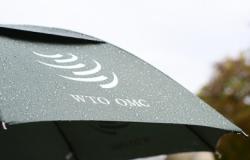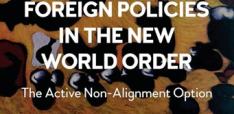Is ‘Pragmatic Multilateralism’ About to Revolutionize Free Trade Policy?

For the past decades the international trade community has been struggling with a word that less and less countries are ready to hear: multilateralism – or the idea that trade rules must be decided through consensus and apply to all. Over the past few months and weeks, however, the World Trade Organization (WTO) has been reviewing its policy approach to trade and a new concept seems to have emerged as a potential solution to current policy, political and legal deadlocks: ‘pragmatic multilateralism’. After years of policy disagreements, in other words, the WTO seems ready to admit that consensus-based talks need to leave room to down-to-earth need-based negotiations possibly more suitable and more efficient. So, could ‘pragmatic multilateralism’ revolution free trade policy? Probably not.
Long relegated to a very distant matter of global politics and complex regulation, free trade has historically been fairly irrelevant to the public. At best, trade was about free circulation of goods and persons as part of the European Union construction debates. At worse, it was pointed at for its negative impact in terms of globalization and designated as a concern by a minority of activists vocally criticizing G7 and G20 summits benefiting the richest. To policy experts, in contrast, free trade was always a problematic matter of multilateralism, i.e. a chaotic political and legal model into which all decisions and policies had to be made and conducted through unreachable consensus.
As of 2016, the situation has somehow evolved, with free trade now being widely polemical.
On the public debate side of things, trade has become a burning citizenship issue. Words such as globalization, protectionism, nationalism, Brexit or TPP, TTIP and CETA are more than ever part of the people’s vocabulary. Open markets are perceived as a threat, illustrated in the past by the fear of the polish plumber and incarnated today by the fear of US-made hormones beef and GMOs, by the fear of Syrian migrants (the free circulation of goods and persons helping), or by the idea that arbitral tribunals will deprive states from their sovereignty to the benefit of multinational corporations. In sum, the public now associates free trade with disloyal globalization and to a certain extent to issues that do not directly relate to it.
On the policy side of things, however, the fundamental issues remain. The trade community has failed to go beyond the historical limitations of the multilateral model and still lacks strong and moving-forward leadership. And this is precisely where ‘pragmatic multilateralism’ is supposed to come into play: as a potential exit door to the deadlock into which the international community is stuck.
Bluntly, multilateralism has always been the weakness of the global trade system.
In theory, multilateral negotiations have always been about building a global framework deemed acceptable and applicable to all. In practice however, the model produced little results, with countries being overall incapable and unwilling to reach a multilateral agreement on how liberalization – i.e. market opening efforts – ought to take place.
The World Trade Organization was created in the mid-1990s as part of the Uruguay negotiations Round. At the time, after more than seven years of talks some progress had been made in relation to tariffs, textiles or intellectual property. Trade in services had made progress too, but multilateralism and the necessity to reach a consensus were often used as a leverage to obtain concession on other matters and global commitments overall remained limited. The Doha Round then followed from the year 2001 with important liberalization expectations, but the discussions mainly focused on agricultural issues which led to an incapacitating and never-ending political impasse.
In reality, the participants clearly had diverging priorities which made the multilateral consensus-based model impossible to operate. Simply put, developing economies sought to obtain greater access to highly subsidized developed agricultural markets (a major source of export) but policy-makers in the developed economies looked passed the matter and rather required progress on modern issues such as financial services, telecommunications or investment which were not a priority to developing economies. For the same reason, whilst the world has progressively shifted from a global economic model based on trade in goods to a model increasingly impacted by trade into services, the multilateral model overall had a hard time adapting the applicable trade framework.
But additional negotiations took place, on a different and more pragmatic basis.
In parallel to the WTO, countries have pursued discussions on the various issues which were left outside of the Doha talks, bilaterally, trilaterally, or to follow regional preferences. The United States alone signed over twenty preferential free trade agreements such as the NAFTA agreement with Canada and Mexico in the 1990’s. Of course the TPP agreement between the US and eleven countries of the Asia-Pacific region and the TTIP between the US and the European Union have been designed with these exact liberalization policy goals in mind. On the European side, the CETA agreement with Canada seems to be progressing, and elsewhere other frameworks are being designed. China has important plans regarding its FTAAP project in Asia and the ASEAN is currently developing as a major trade and political actor in the region. Not to mention other agreements which, even though they will be significant are much less discrete.
Of course, the trend has raised various issues in terms of global trade policy-making.
Inevitably, the argument has been formulated that such selective negotiations would create discrimination between the selected few and those left outside of discussions. Yet, whilst multilateral rules would not take place in the past because of the absence of a consensus, every member of the WTO is now a party to at least one preferential trade agreement which suggests that international rule-making will increasingly be designed, negotiated and put into place through the creation of a network of preferential and regional texts, aimed at deepening regional integration on a need-basis rather than one-size-fits-all globalization.
More importantly, the recourse to preferentialism has led to questioning the very status of the WTO as a forum for international trade and has increased the doubts as to the very future of multilateralism as a political model. Over time, the contribution of members to the multilateral discussions has weakened – some WTO officials talked about a negotiating fatigue – and the relevance of the system has faded.
Such dissatisfaction has therefore opened a breach.
In December 2015 – after nearly 15 years of negotiations – the world leaders met at the Tenth WTO Ministerial Conference in Kenya where they finally agreed to disagree and to move on. Abruptly, experts have long said that Doha was dead but we now know that it is buried in Nairobi.
Obviously, the official discourse at the WTO is still that the Organization will remain the main venue for trade discussions, however the Head of the WTO is progressively reconsidering this position. Last year – prior to the Conference – Roberto Azevêdo the Director General of the WTO had already admitted that the multilateral process was going nowhere. Later, the Nairobi Declaration acknowledged that ‘new architectures’ would need to be considered in order to avoid harming the trade landscape any further. In other words, the idea was officially introduced that preferential discussions and a more down-to-earth approach to multilateralism would need to be treated as serious opportunities more than as contenders.
The concept of ‘pragmatic’ trade was formulated even more freshly. In September this year, Azevêdo noted that while multilateralism would remain the preferred venue for discussion the ‘coherence between different initiatives’ would be key to ‘reinforce[ing] the multilateral system’. A month later, he went on to describing the increasing importance of multilaterals and plurilaterals in terms of a ‘kind of pragmatism’ helping to keep delivering results. Soon after, Michael Froman – the United States Trade Representative – followed the lead and called for an increase use of ‘Pragmatic Multilateralism’, i.e. a larger reliance on small size agreements negotiated within the WTO and on agreements negotiated in parallel to the WTO, all capable of fostering the Organization’s free trade goals. In other words, global policy progress through smaller scale policy-making.
So, could ‘pragmatic multilateralism’ revolutionize free trade policy? Probably not.
After years of ‘trade’ being considered a bad word because of multilateral failures and excesses ‘pragmatic multilateralism’ could thus become a fashionable word. To politicians, at least. Having said this, although the evolution in the WTO discourse could suggest a possible change in regimes in reality pragmatic trade is everything but new: it already is the prevailing policy-making alternative to the WTO model. Overall, the move thus makes sense politically-speaking but the policy impact is limited. Preferentialism is simply becoming politically correct.
A major test will be whether the WTO’s ‘new’ pragmatic approach actually translates into strong and moving-forward leadership, improved policies, texts, rules and facts. To the citizens, meanwhile, liberalization and trade will for now remain associated with the negative aspects of globalization.
Dr Antoine P. Martin is a senior Researcher at the Chinese University of Hong Kong. He analyses and comments the legal and policy aspects of globalization and liberalization at the trade and investment level, with a particular focus on financial flows and financial services.
Photo credit: World Trade Organization via Foter.com / CC BY-SA


